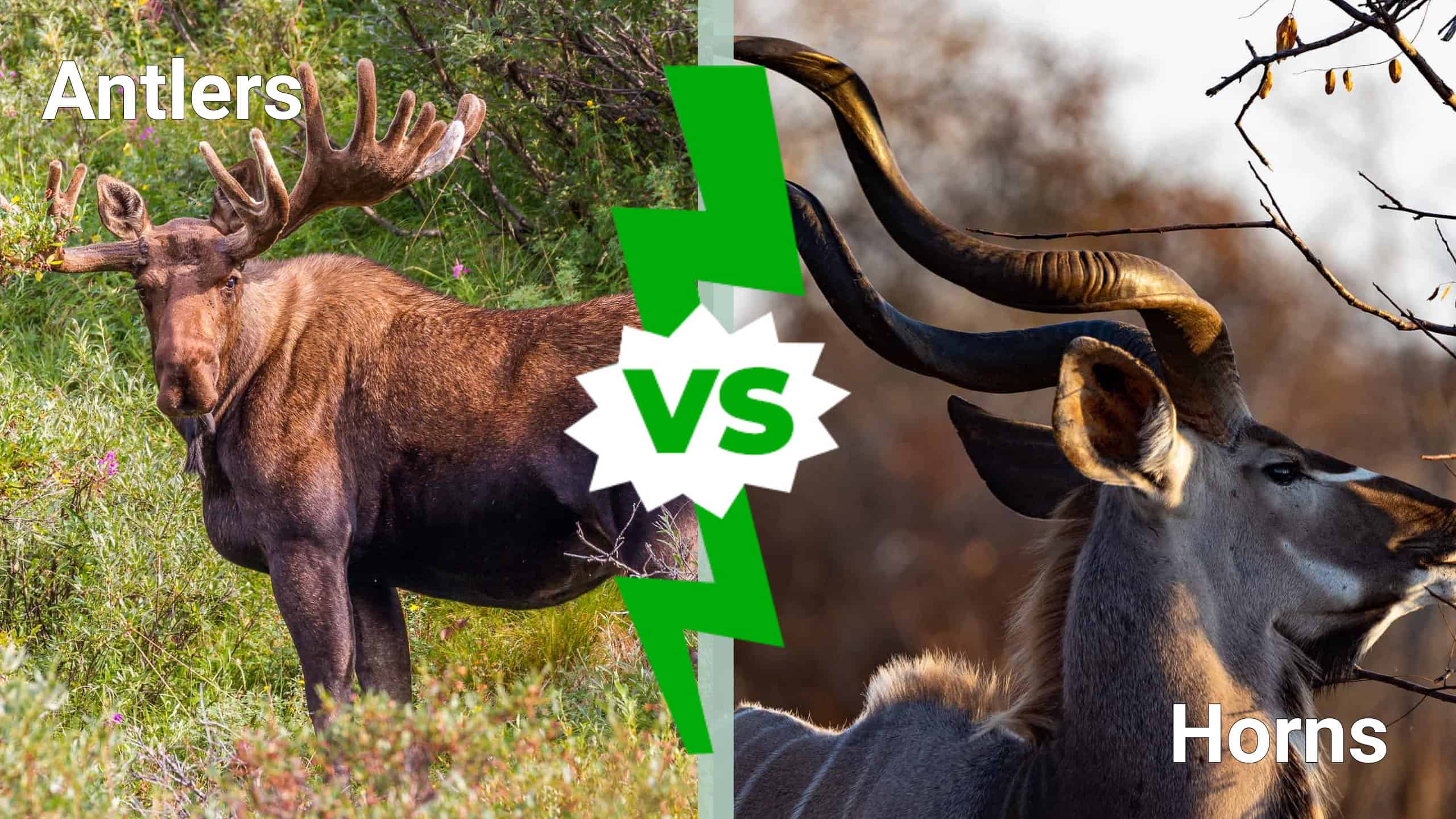Many people use horns and antlers interchangeably. This may lead many to think they are basically the same thing. After all, they are stiff, tough structures grown on the top of the heads of hoofed animals. However, when it comes to antlers vs. horns, there are some distinct differences.
Keep reading to learn about these key differences and the examples of animals that have each type of bony structure.
1. Growth
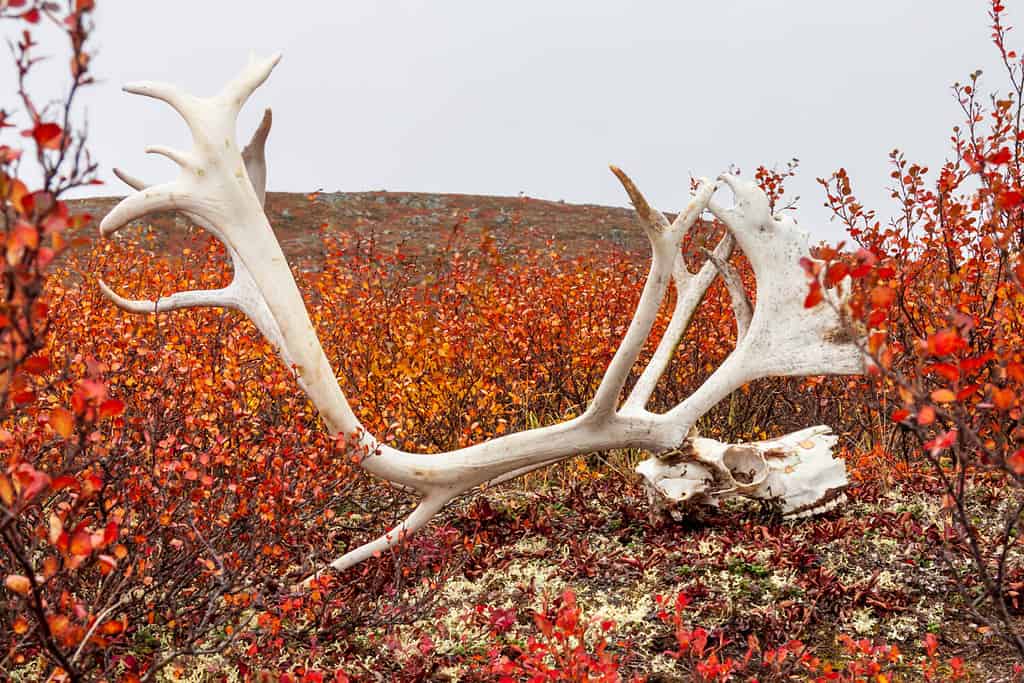
You can often find antlers just lying around in winter as animals shed them. But you won’t likely find a horn just sitting on the ground unless an animal is attached.
©Streamside Adventures/Shutterstock.com
The most obvious difference between antlers and horns is the growth. Horns grow throughout the entire year and stay on the animal’s head.
Meanwhile, antlers grow every spring. They start as small nubs before turning into the grand racks you know and many hunters search for. By winter, these antlers fall off and the animal is again left without anything on the top of their head until spring comes around again.
2. Animals
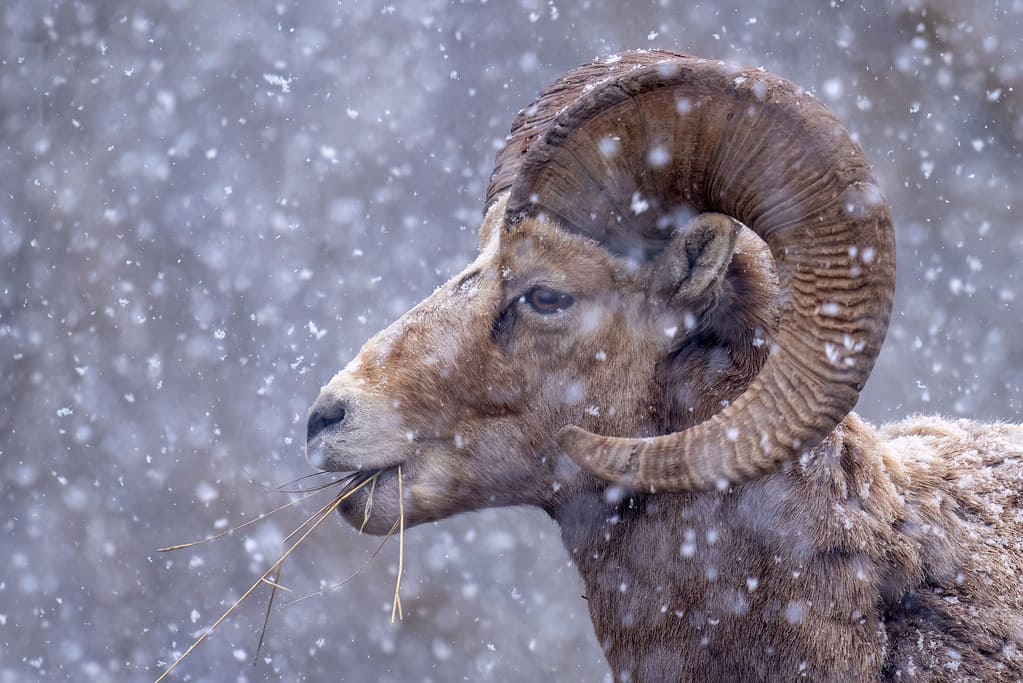
A sheep, like this bighorn sheep, has horns that curve as the animal ages.
©Wirestock/iStock via Getty Images
The animals that get horns vs. antlers are different as well. Horns are found in the Bovidae family. This is animals like goats, sheep, antelope, gazelles, and even cows. On the other hand, antlers are part of the Cervidae family. This includes deer, moose, and elk.
3. Materials
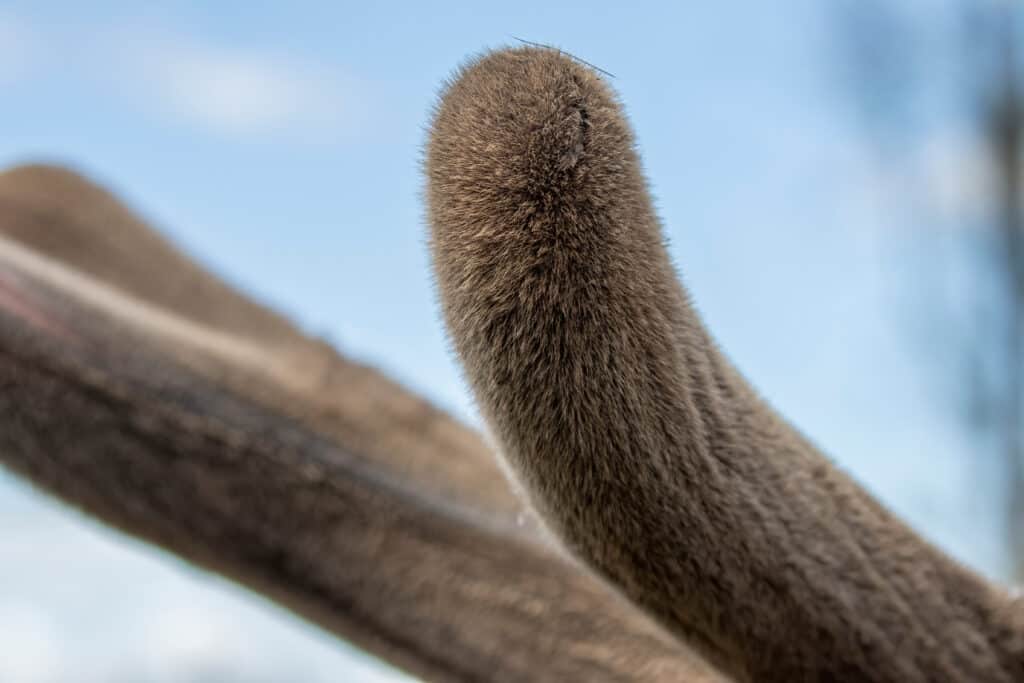
The fuzzy stuff on antlers early on in the growing season is known as velvet.
©Karel Bock/Shutterstock.com
Horns are made of bone. They aren’t necessarily part of the skull but are connected to the skull thanks to connective tissue. Over the top, there is a sheath. This is made from keratin, like what makes up nails and hair. Some horned animals lose this sheath throughout the year and grow them back, but the bone underneath never falls off unless by severe injury.
Antlers aren’t made from bone. They grow out of small bony structures. These usually appear as nubs or hard plates on the top of the head. These are known as pedicels. When they first start growing, the antlers have high levels of protein and water. Then, a layer of velvet grows on top, which is made from skin, soft hair, and blood vessels.
Near the end of the growing process, the spongy material that is the antler starts to solidify on the outside. Meanwhile, the inside of the antler is coarse and spongy, made up of something known as lamellar bones. When it’s time for the antlers to come off, the pedicels lose a lot of their calcium, which weakens the connection between the pedicels and the antlers.
4. Branching
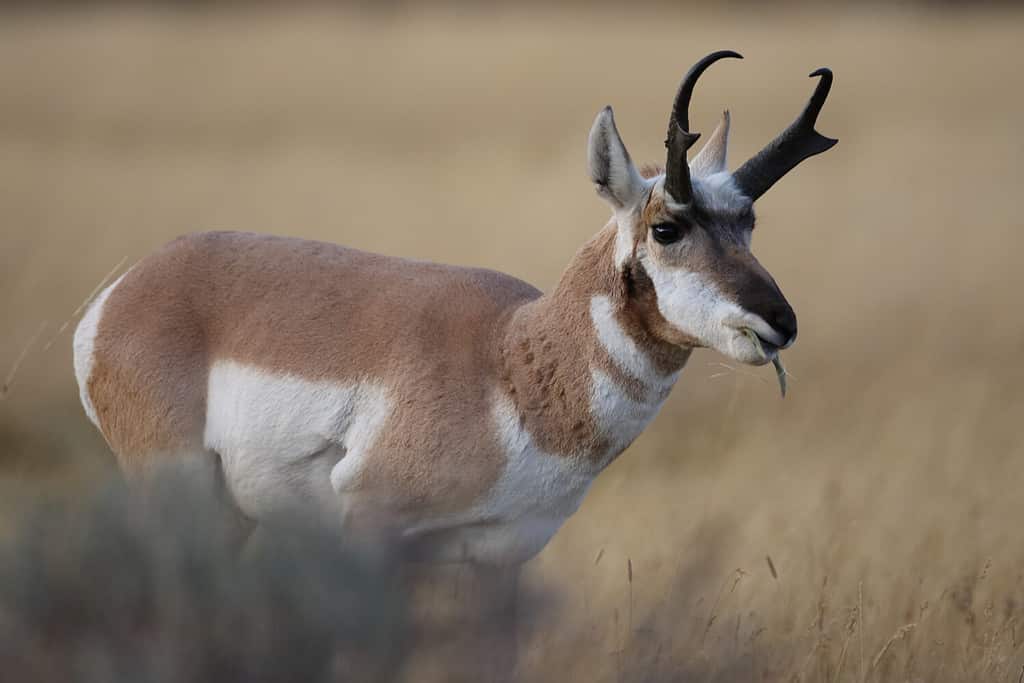
Pronghorns break some of the rules on what makes a horn a horn.
©Greens and Blues/Shutterstock.com
Horns never branch out or shed. Some animals that have horns shed the lining of their horns, but they never lose the full horn. Since they stay with animals for the remainder of their life, they grow in one direction. Every species has slightly different growing structures and patterns, but branching like you see in deer and elk is basically non-existent.
Branching could cause issues as they would get too big or branch out in a way that injures the animal. Instead, what they do is start to curl if they grow long enough, such as the case with bighorn sheep.
Antlers, conversely, do branch. The reason why they branch isn’t exactly clear, nor has it been studied in depth. However, it is known that every year, antlers get more complex. So older animals tend to have more branching than younger ones.
There is one horned animal that displays a mix of characteristics. The pronghorn has branched horns. However, it only ever branches once. It also sheds every year. But it’s not the entire horn that sheds, it’s just the outer sheath made from keratin. Interestingly, it is the sheath that branches, and not the actual horn. Without the sheath, they only have short and straight prongs made of bone.
Because of the way the bones are structured, and the fact that the bone stays in place throughout the year, they are considered horns. Their similarities to antlers do add some confusion to the mix though.
5. Genders

If you see a
reindeer
with antlers in December, it’s likely a female.
©pawopa3336/iStock via Getty Images
For the most part, both males and females grow horns in the Bovidae family. They may look slightly different between the genders, with females often having smaller and lighter ones. The males have heavier and bigger horns because they use them to compete and fight with members of the same sex.
On the other hand, with antlers, it’s usually just the males that have them. The only females that are known to grow antlers in the Cervidae family are caribou. The antlers of female caribou are smaller, but they carry them longer in the year. Males will lose theirs in November or early December, but females often wear theirs until after Christmas.
This could be because antlers are intensive to grow. They take a lot of energy out of males, so they might not be able to stay on as long. However, since females aren’t putting as much energy into making their antlers big and impressive, their energy reserves aren’t used as quickly.
Thank you for reading! Have some feedback for us? Contact the AZ Animals editorial team.

